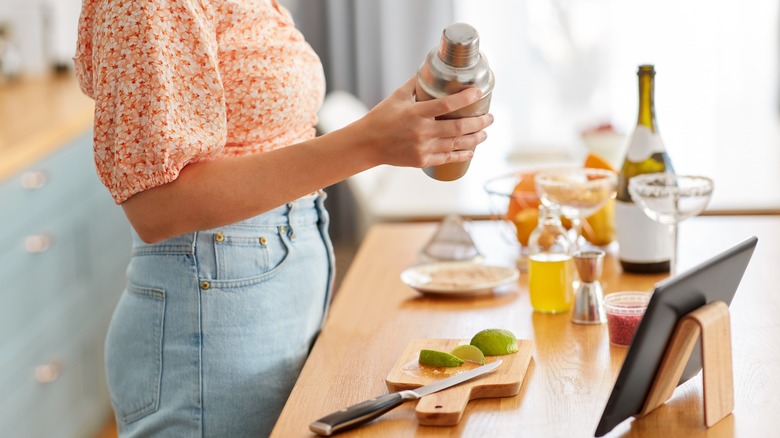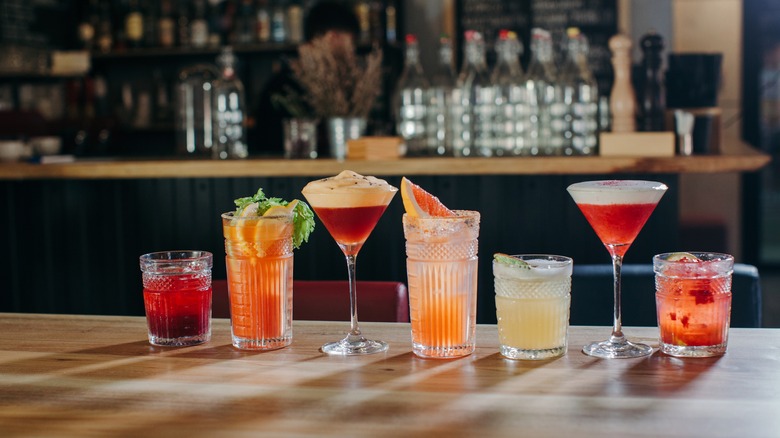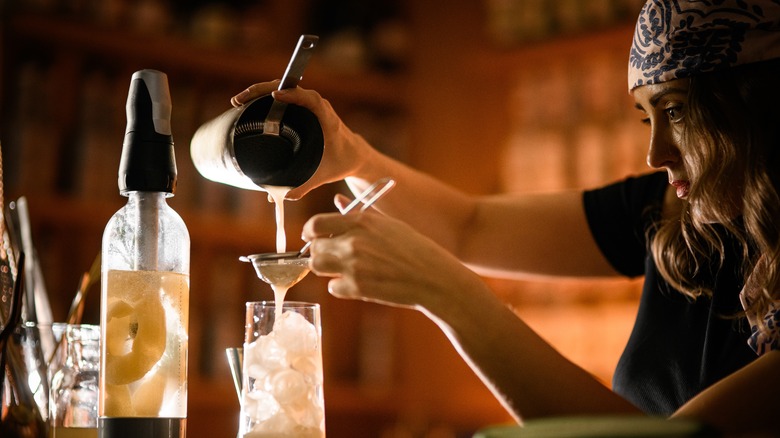The Straining Technique That Makes Homemade Cocktails Taste Expensive
There's something to be said for having a seat at a hip cocktail bar and watching a bartender, perhaps wearing old-fashioned sleeve garters, methodically preparing your drink. After they dramatically shake your cocktail, you may notice them then using not just a regular cocktail strainer but a second fine-mesh strainer as they pour your drink into a chilled glass. This double straining technique isn't just for show. And, you can employ it at home when mixing up cocktails for an elevated drinking experience that doesn't come with the price tag of that hip cocktail bar.
This double straining technique, besides catching any errant ingredients like citrus pulp, is best employed when you're making a shaken cocktail served "up," such as a Paper Plane. As with other shaken cocktails, the Paper Plane, made with bourbon, Aperol, Amaro Nonino, and lemon juice, can suffer from an over abundance of floating ice shards after a vigorous shaking. The strainer catches these crystals that, as they quickly melt, can dilute the cocktail.
When to double strain a cocktail
There are two reasons it makes sense to double strain a cocktail. The first is the most obvious one. When making a shaken drink with ingredients like mint or fresh citrus juice, a mesh strainer will prevent any of the bits of leaf or pulp from ending up in the finished product. Aesthetics aside, you don't want your guests having to spit something out.
The second situation, in which ice shards get into the drink, may seem less important. But, those little pieces of ice floating in an otherwise liquid cocktail takes away from the overall experience. They can affect the mouthfeel of the drink, especially with the first few sips, and it only gets worse the longer the drink sits and the ice melts. You can end up with extra water content that can swamp your otherwise perfect cocktail. Some people use milk washing to create clarified cocktails that taste better. However, double straining means less prep work and fewer time-consuming steps.
How to employ the technique at home
Pulling this off depends on the kind of cocktail shaker you prefer use at home. If you use a Boston shaker, you'll need a Hawthorne strainer (it's made of metal and has a distinctive coil) that fits over the top of the shaker. If you use a Cobbler shaker, it already has a built-in strainer. A cone-shaped mesh strainer is the standard second type used at cocktail bars, but any fine mesh version from your kitchen will do if you don't want to buy one for your home bar. Once you've added the ingredients and thoroughly shaken the drink, pour it through both strainers into a chilled glass appropriate for the cocktail.
You and your guests will see and taste the difference this simple technique affords your cocktails. So next time you're feeling like mixing up some cocktails at home, whether a refreshing Mai Tai or a gin-based dirty martini, pull out a fine mesh strainer. You can create an elevated drinking experience without the cocktail bar price tag.


